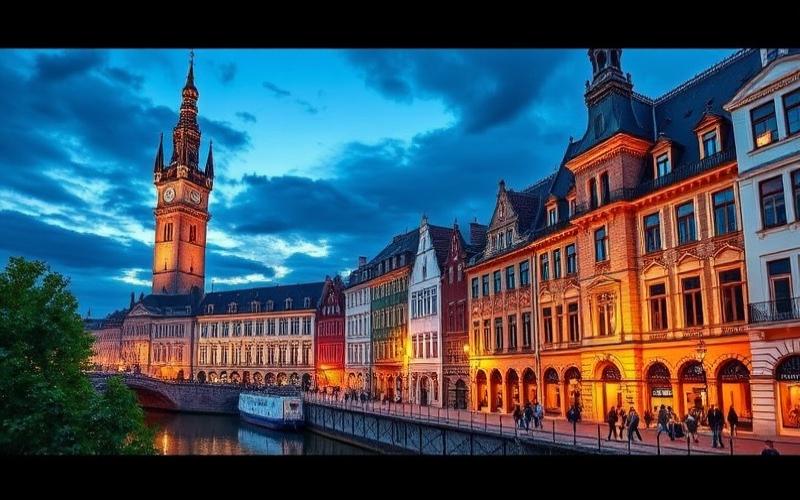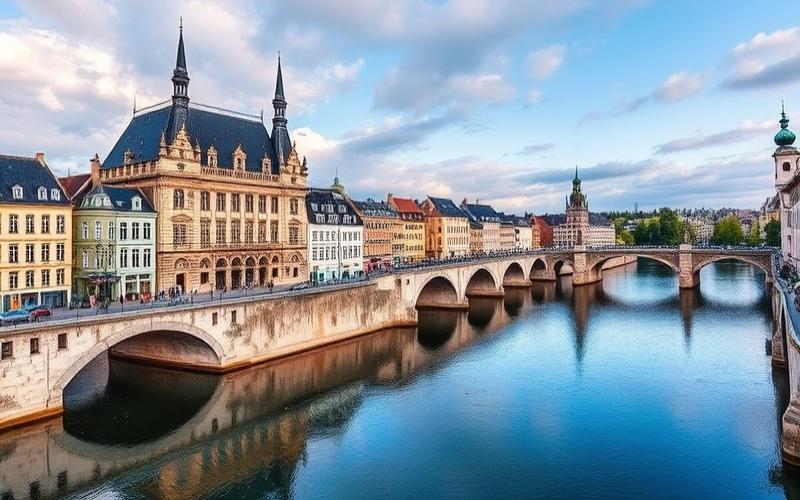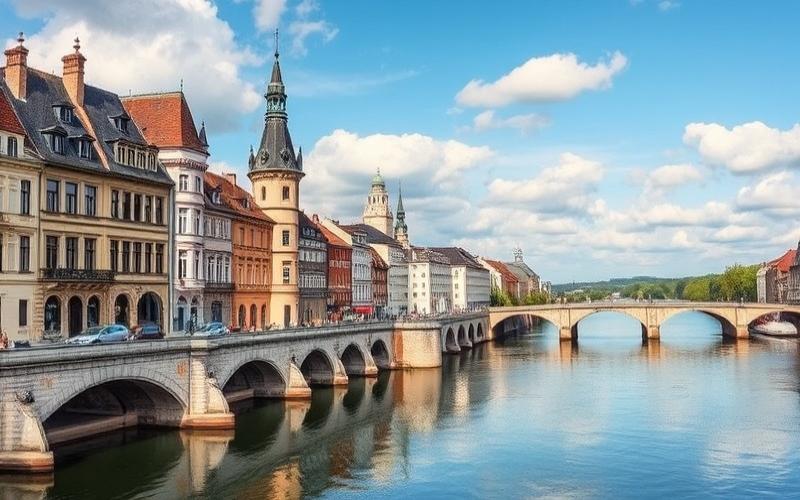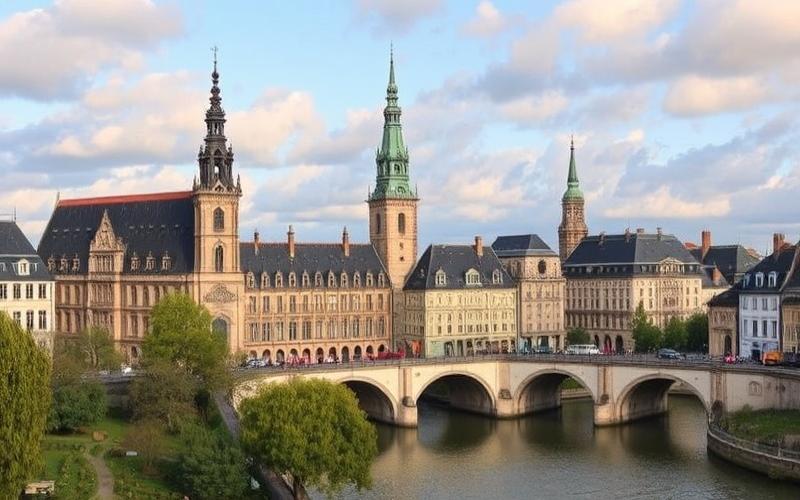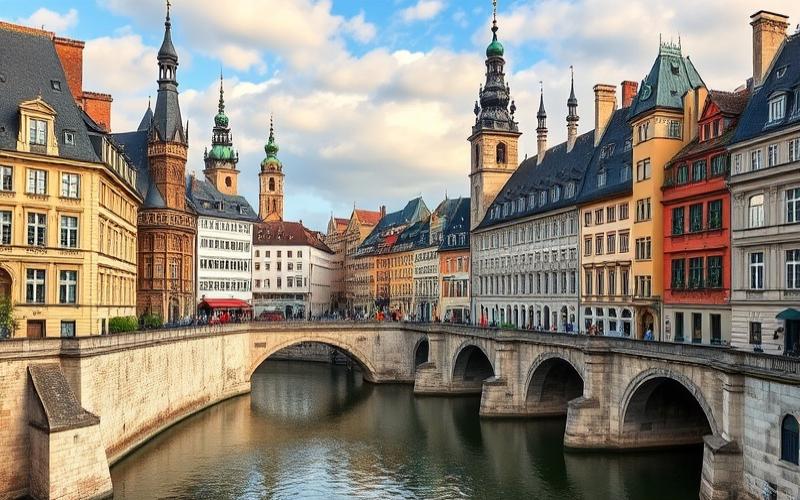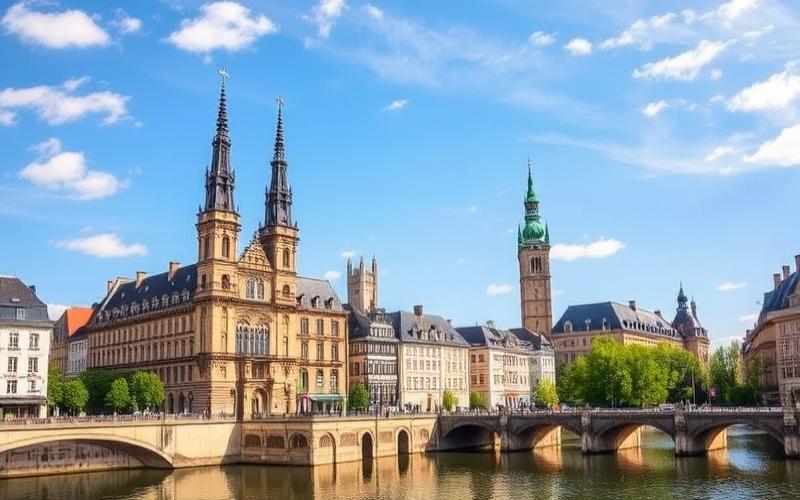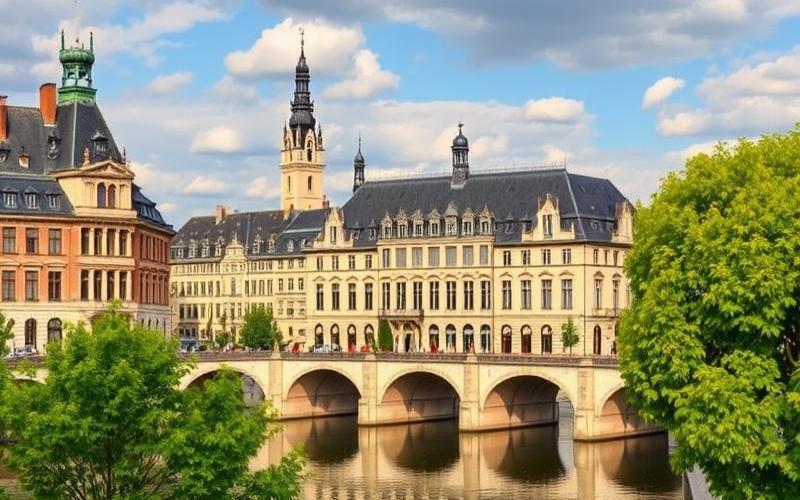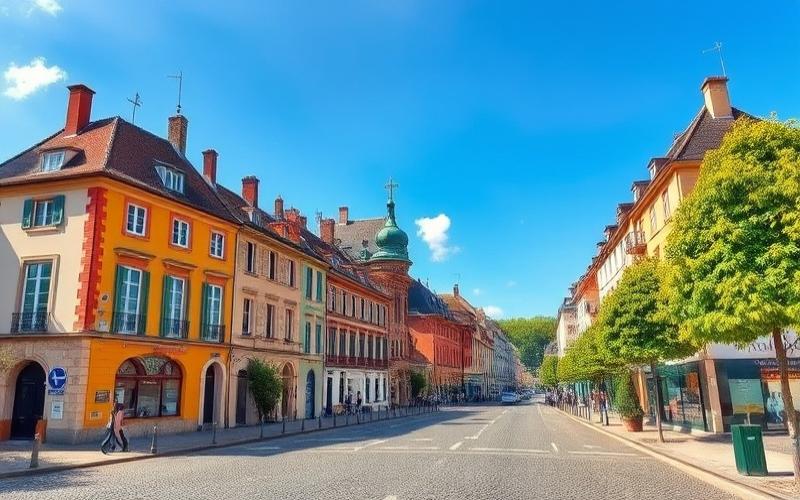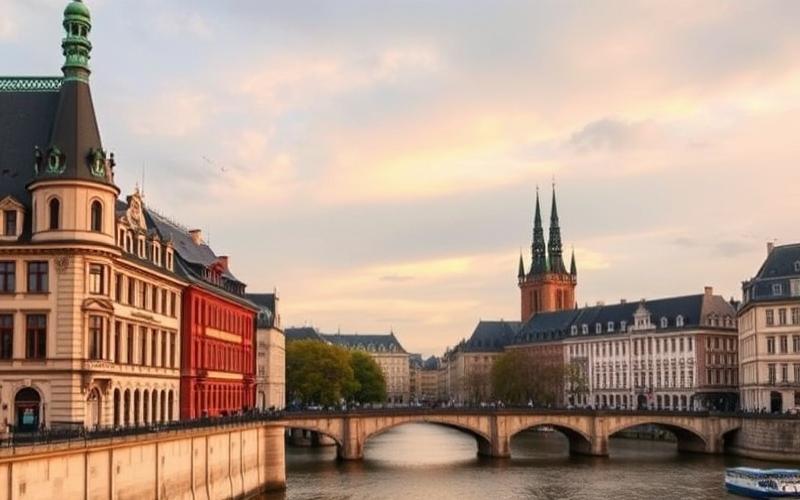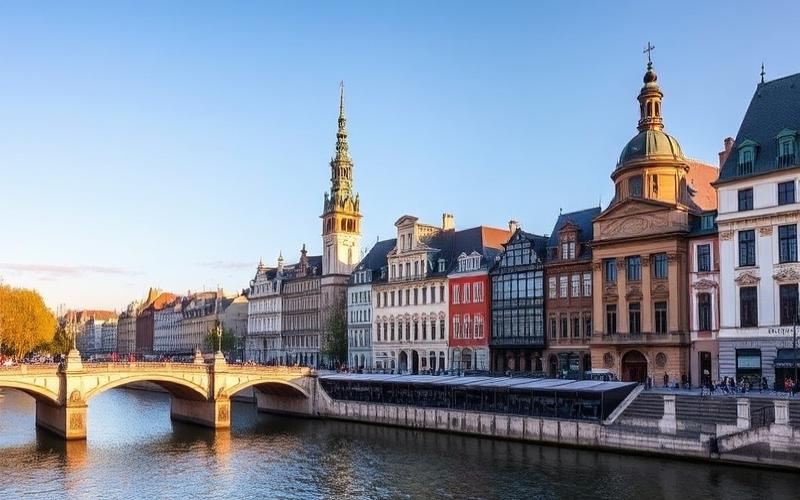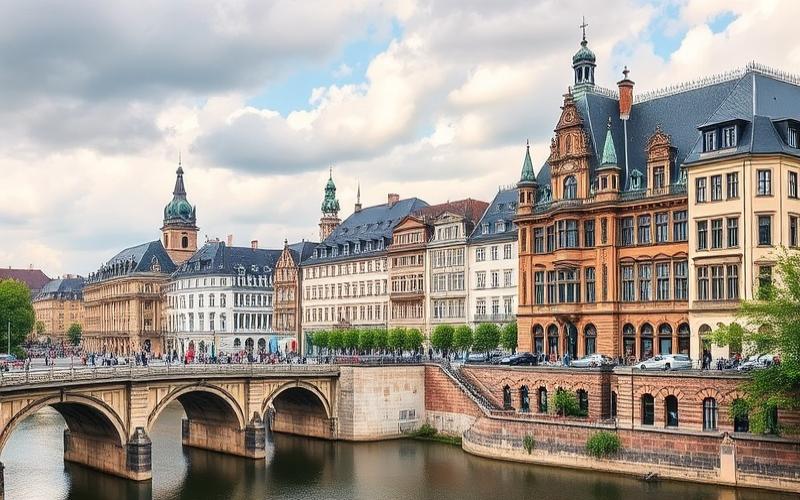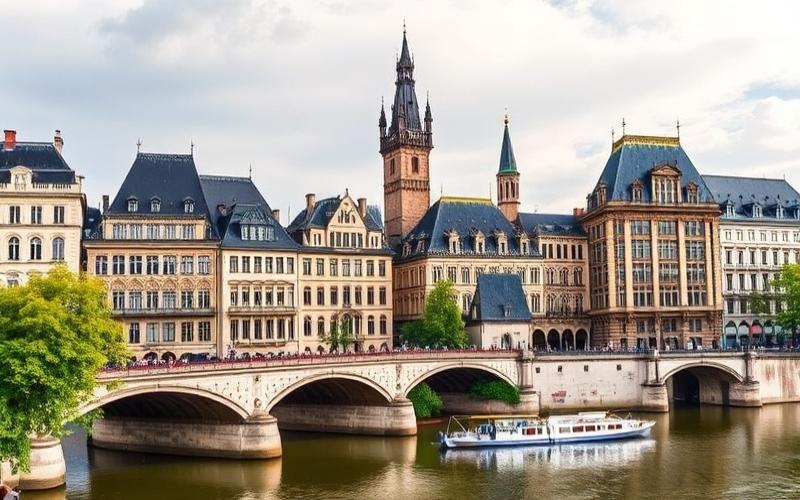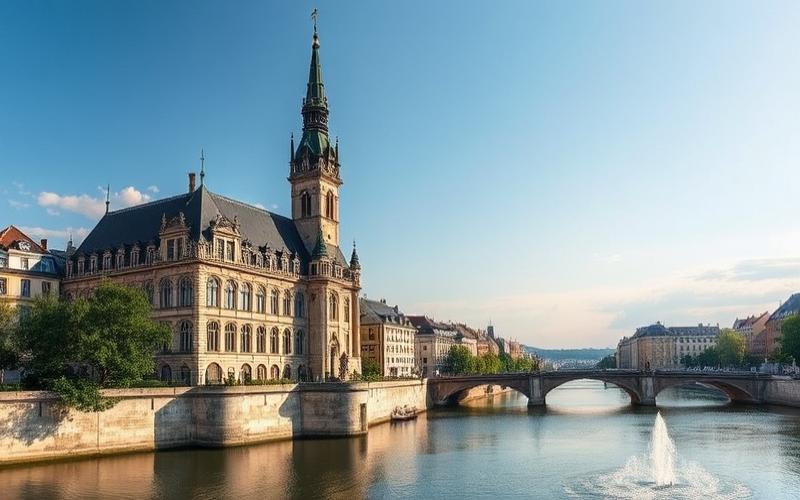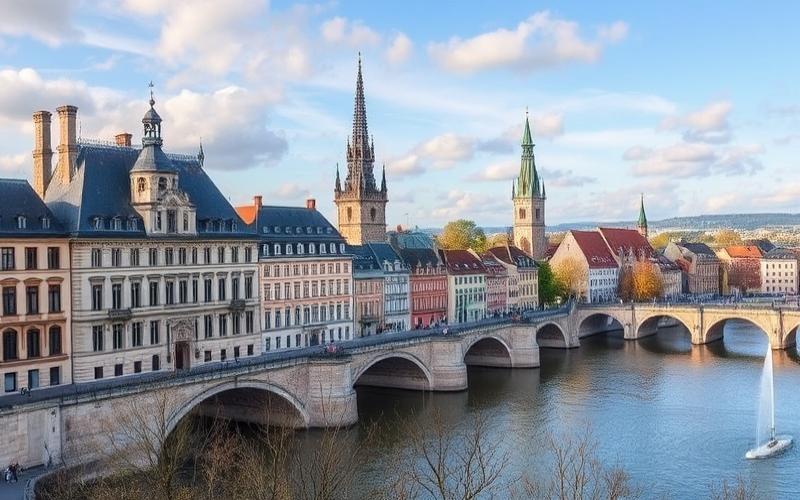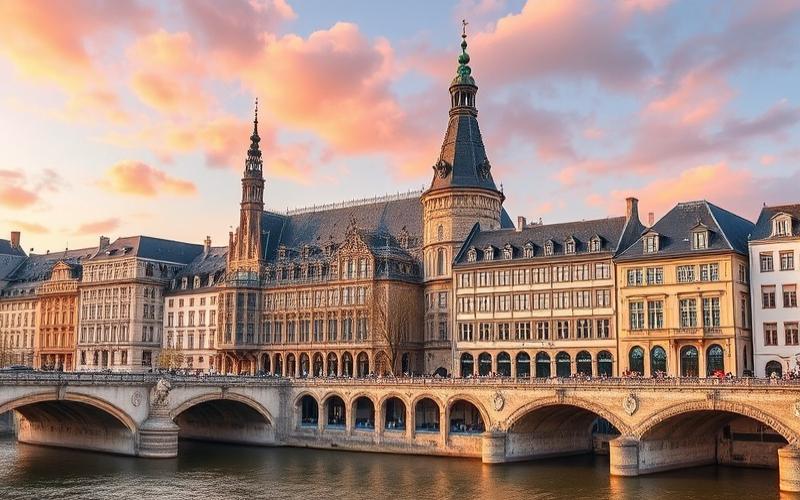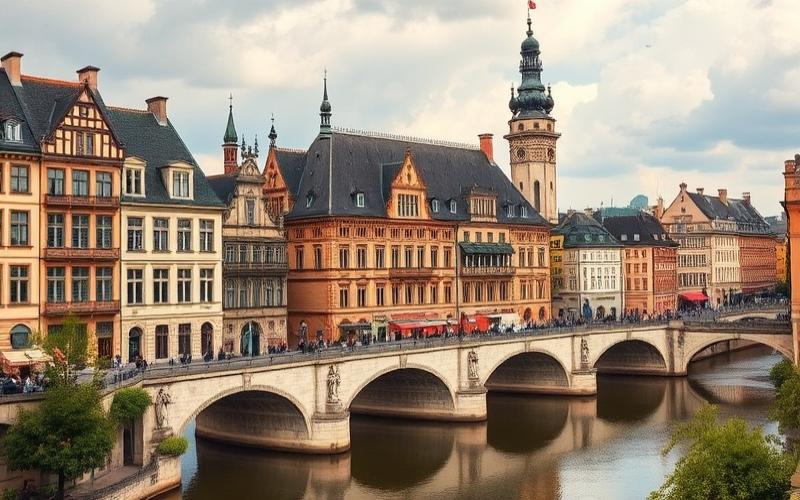
 Published on and written by Cyril Jarnias
Published on and written by Cyril Jarnias
Luxembourg, a small country nestled in the heart of Europe, boasts a rich and eventful history dating back to antiquity. Let’s explore together the captivating journey of this strategic territory that has managed to preserve its independence throughout the centuries.
Ancient Roots: From Lucilinburhuc to the County of Luxembourg
The history of Luxembourg begins long before the creation of the country as we know it today. The territory of the current Grand Duchy was inhabited as early as the Iron Age by Celtic tribes, particularly the Treveri. Subsequently, the region was successively occupied by the Romans and then the Franks.
The name “Luxembourg” first appeared in 963, in the form “Lucilinburhuc,” meaning “little castle.” This name refers to a small fort located on the rocky promontory of Bock, overlooking the Alzette valley. It was at this date that Count Sigefroi, considered the founder of the country, acquired this strategic site from the Abbey of Saint-Maximin in Trier.
From this castle, Sigefroi’s descendants gradually expanded their influence and possessions. In 1059, Conrad I became the first to officially bear the title of Count of Luxembourg. Over the centuries, the County of Luxembourg grew significantly, becoming one of the main powers in the region.
Good to know:
The name “Lucilinburhuc” evolved over time to become “Luxembourg” in French and “Lëtzebuerg” in Luxembourgish, the national language of the country.
The Golden Age: When Luxembourg Ruled Europe
The 14th century marked the peak of the House of Luxembourg on the European stage. In 1308, Count Henry VII was elected King of the Romans (future emperor of the Holy Roman Empire). He was crowned emperor in Rome in 1312, inaugurating a period when the Luxembourg dynasty would play a major role in European affairs.
- Henry VII (1308-1313)
- Charles IV (1346-1378)
- Wenceslaus (1376-1400)
- Sigismund (1410-1437)
In 1354, Charles IV elevated the County of Luxembourg to the rank of a duchy, thereby enhancing its prestige. This prosperous period ended in 1437 with the death of Sigismund, the last emperor of the House of Luxembourg.
Good to know:
During this period, Luxembourg experienced considerable territorial expansion, extending well beyond its current borders.
Under the Yoke of Major Powers: Luxembourg Tossed Between Empires
Starting in 1443, Luxembourg entered a long period during which it was successively governed by various European powers. The duchy was first conquered by the Burgundians, then came under the control of the Spanish Habsburgs in the 16th century.
Luxembourg’s strategic position made it a major stake in conflicts between the great European powers. The city of Luxembourg was gradually transformed into a formidable fortress, nicknamed the “Gibraltar of the North.”
- 1443-1506: Burgundian domination
- 1506-1684: Reign of the Spanish Habsburgs
- 1684-1697: French occupation under Louis XIV
- 1697-1795: Return to the Austrian Habsburgs
In 1795, Luxembourg was annexed by revolutionary France and became the “Department of Forests”. This period marked the introduction of the Napoleonic Code, which still forms the basis of the Luxembourg legal system today.
Good to know:
Despite these changes in sovereignty, Luxembourg always maintained a certain degree of autonomy and its own identity.
The Birth of the Grand Duchy: Towards Independence and Neutrality
The fall of Napoleon in 1815 marked a decisive turning point in Luxembourg’s history. The Congress of Vienna decided to create the Grand Duchy of Luxembourg, assigned in personal union to the King of the Netherlands, William I of Orange-Nassau. The country also became a member of the German Confederation.
- 1830: The Belgian Revolution leads to the partition of Luxembourg
- 1839: The Treaty of London establishes the country’s current borders
- 1867: The Treaty of London guarantees Luxembourg’s neutrality and independence
- 1890: End of the personal union with the Netherlands, beginning of the Nassau-Weilburg dynasty
Luxembourg gradually established the institutions of a modern state, with the adoption of several constitutions (1848, 1856, 1868) that established a constitutional monarchy.
Good to know:
Luxembourg was never a colony in the strict sense, but experienced a form of foreign domination through the personal union with the Netherlands.
The 20th Century: Between Trials and Economic Renaissance
The 20th century brought its share of challenges to the young Luxembourgish state. The country was occupied by Germany during both World Wars (1914-1918 and 1940-1944), despite its neutrality. These trials strengthened the national sentiment and the desire for independence among Luxembourgers.
- 1944: Creation of the Benelux Economic Union
- 1952: Founding member of the European Coal and Steel Community (ECSC)
- 1957: Signing of the Treaty of Rome, creation of the EEC
- 1999: Adoption of the euro
Simultaneously, the country underwent a remarkable economic transformation. Initially based on steelmaking, the Luxembourg economy gradually diversified into services, particularly finance, making the Grand Duchy one of the most prosperous countries in the world.
Good to know:
Luxembourg is today one of the main European financial centers and hosts numerous institutions of the European Union.
Luxembourg Today: A Country Resolutely Focused on the Future
In the 21st century, Luxembourg continues its modernization and openness to the world. The country has become a model of a multicultural society, with nearly 47% of its population of foreign origin. This diversity is a major asset in a globalized economy.
- Ecological transition and sustainable development
- Digitalization of the economy
- Maintaining social cohesion in a context of strong growth
- Strengthening its role within the European Union
Drawing on its history and adaptability, the Grand Duchy faces the future with confidence, while preserving its identity and traditions.
Good to know:
Luxembourg is one of the few countries in the world with three official languages: Luxembourgish, French, and German.
Disclaimer: The information provided on this website is for informational purposes only and does not constitute financial, legal, or professional advice. We encourage you to consult qualified experts before making any investment, real estate, or expatriation decisions. Although we strive to maintain up-to-date and accurate information, we do not guarantee the completeness, accuracy, or timeliness of the proposed content. As investment and expatriation involve risks, we disclaim any liability for potential losses or damages arising from the use of this site. Your use of this site confirms your acceptance of these terms and your understanding of the associated risks.

